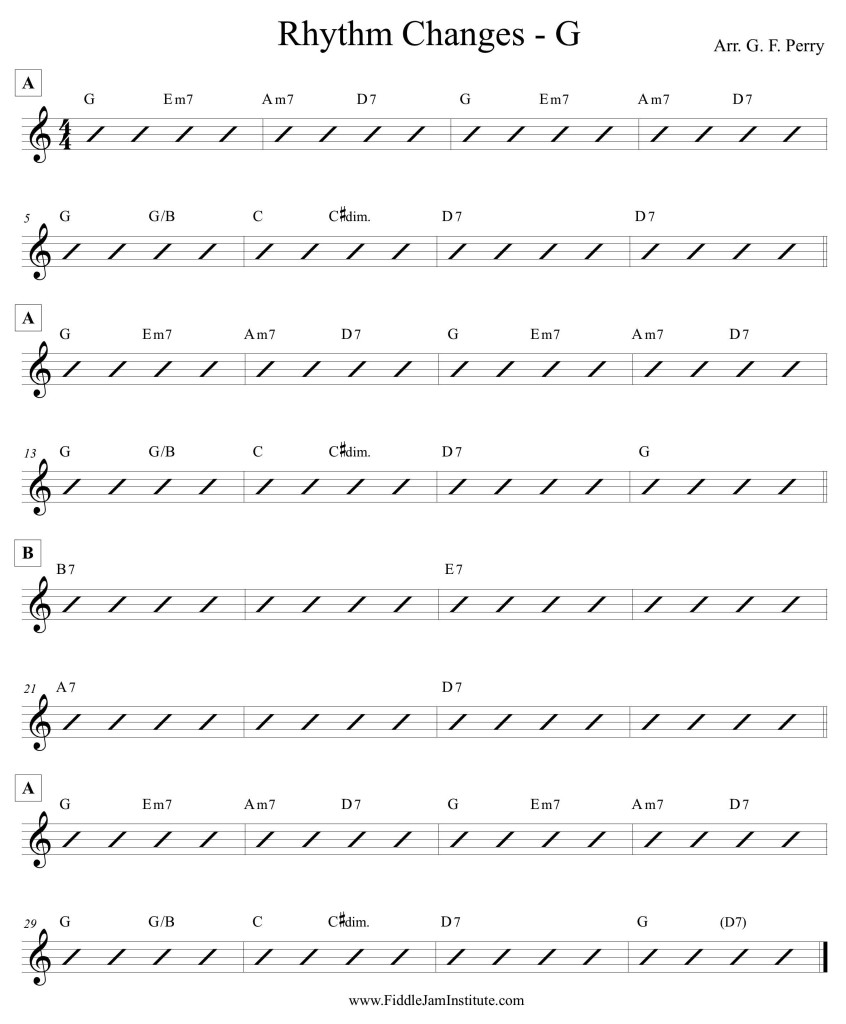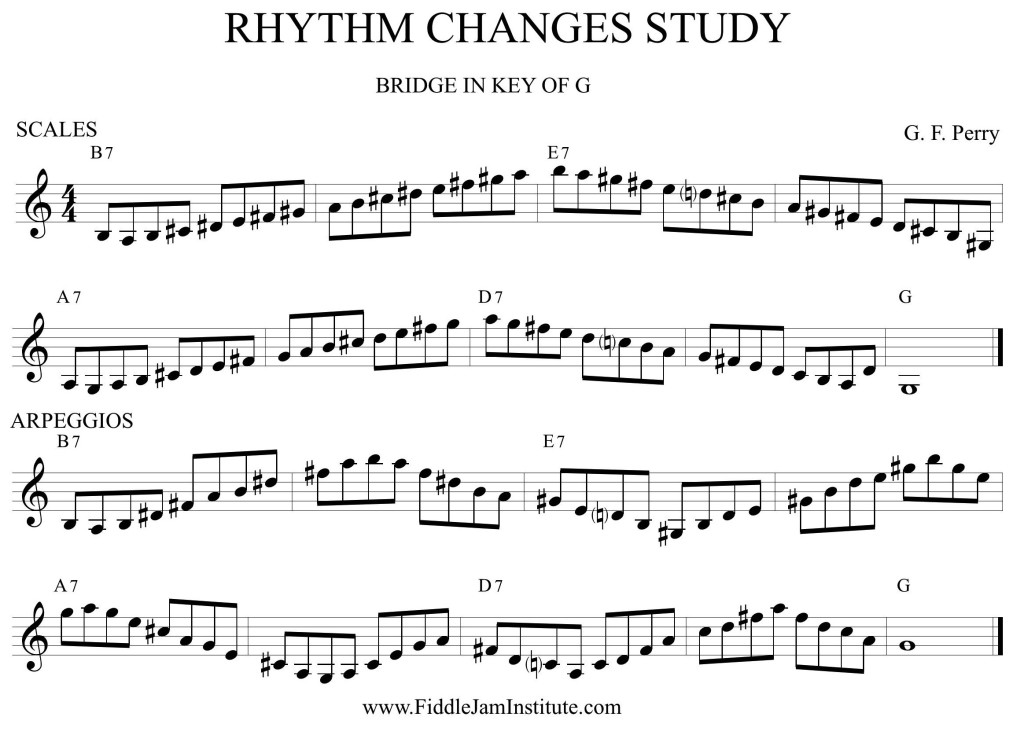Rhythm Changes… what are they? …where do you find them? …what do you do with them? …why are they worth studying? …All good questions…
Join now to see all of this lesson!
If you are not sure what any of this stuff is, check out some primer lessons that might help you here: The Note Number System and The Chord Number System
Rhythm Changes… what are they? …where do you find them? …what do you do with them? …why are they worth studying? …All good questions.
Blues has a standard form of 12 bars, though not every Blues tune is in that format. Jazz as a standard form in a similar fashion: “Rhythm Changes.”
Educational Note: If this material seems over your head currently, you’ll first need to have a basic knowledge of the music number system. Check out these lessons as an primer to understanding the content below:
The Note Number System and The Chord Number System
“Rhythm Changes” is a phrase that came out of the BeBop era when musicians were stretching the limits of Jazz, post World War II. In their rebellion against all that came before, they could barely be bothered to even try to play an organized melody, but still wanted some underlying musical form (sounds kind of conflicted & confused doesn’t it?! ;~). “Free” jazz came later, historically. The lore is that they would get together to jam and just use the chord changes of the popular song “I Got Rhythm” as a basis. These “Rhythm Changes” as they came to be known are a 32 bar AABA song form, with the A’s being very diatonic in nature (meaning that you can basically just jam with the major scale over them), and B section or “bridge” as it’s called has a particular sequence that is not of the overall key exactly, but winds its way back to it using a string of the strong V-I progressions, or “dominant-tonic” chord movements. This string always starts on the III7. Next is the VI7 (which is 5 away from the III7), then II7 (5 away form the VI7), then the V7 (which of course is 5 away from the Tonic at the beginning of the next & last A section). These are each major chords with flatted 7ths, and give us all kinds of interesting leading tones between them to play off of. See the lessons below for more on this.
If you want to play Jazz, you really need to become familiar with Rhythm Changes in all keys, but here is a chart in our example key of G. Remember, just use the major scale (maybe with a few blues notes thrown in once in a while) on the A sections, and follow the 4 chords of the bridge with the Mixolydian scale of each chord. Rhythm Changes Bridges almost always start on the III7 chord.
G-120 bpm
G-160bpm
G-200bpm
G-240bpm
I’ll try to get audio in all 12 keys for these soon! …or just use Riff Master Pro yourself.
Practice these scales and arpeggios for further preparation.
For the more advanced, check out this Master Class video on a cool trick that Stephane Grappelli often did as applied to this tune as practice: ii-V Grappelli Trick.
<<::>>


I am confused by this lesson. Can you suggest one that helps me understand? It’s the key of g but the key signature has no flats or sharps do I thought that wax only c or a minor. Also the third tone of the g scale is b. So I thought III7. Would a b7 chord but its em7. So I’m wayyy off with my understanding. What lessons can I go to to understand what you mean? I also don’t understand III7 bring a fifth from VI 7. What lessons can I go to yo fill my knowledge gap? Thank you. Carol gauper
Sent from my iPhone. Please excuse the brevity, spelling and punctuation.